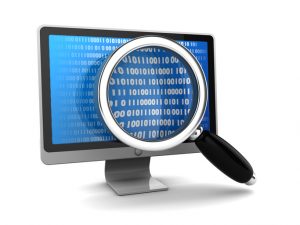Use The 'E' And Let The Data Be Your Guide in eDiscovery
There is a reason for the 'e' in eDiscovery.
 I’ve heard the argument many times — just drop the “e” from eDiscovery. It’s just plain discovery and every case involves ESI. We don’t need to call it eDiscovery.
I’ve heard the argument many times — just drop the “e” from eDiscovery. It’s just plain discovery and every case involves ESI. We don’t need to call it eDiscovery.
I call BS.
Here’s why.

AI Presents Both Opportunities And Risks For Lawyers. Are You Prepared?
Nothing about how we think about, conduct, or manage discovery is the same as it was when we had paper. There are sources of evidence that we never had before (and new ones every day), constantly changing technology both to create new data and help us manage, look at, and organize data for litigation, volumes of evidence to sift through that grow exponentially every year, and few lawyers who know how to spot the issues and think through how to handle it all within the confines of the law and their client’s budget.
Witnesses don’t walk into a room and hand you their manilla folder full of documents, or point you to a row of file drawers. You have to find it. You have to know the questions to ask. You have an entirely new set of obligations in discovery as a result of ESI.
eDiscovery is a completely different ballgame than discovery was and it requires a completely different thought process. Instead of starting at the beginning and asking for the world and the gigabytes or terabytes of data that might mean, you need to start at the end — what you really want to tell a judge or jury — and work backwards.
How do you do that? You let the data guide you. Leverage the “e.” Start with the people who create, store, send, and receive the data that matters for your case. Thinking about the data will guide you through each step of discovery:
Sponsored

AI Presents Both Opportunities And Risks For Lawyers. Are You Prepared?

How The New Lexis+ AI App Empowers Lawyers On The Go

Law Firm Business Development Is More Than Relationship Building

Happy Lawyers, Better Results The Key To Thriving In Tough Times
- Identifying the scope of preservation. Preservation is the first chance you have to keep the scope of your client’s implicated data reasonable. And it’s the first opportunity you have to tell the other side what you think the scope should be. So what does scope include and how do you figure it out? Scope of preservation includes three things: a date range, custodians, and data sources. The date range is determined by both the dates of the event (an accident, a signed contract, a theft of trade secrets) and the dates that the custodian or data source still has available or when she/he was involved. Almost universally, I can pinpoint the date range for each custodian by interviewing her or him and having them look at their data to find out the start date for preservation. For example, a custodian’s first day at a new role involving the project at issue is the first day of preservation. Your date range will vary by custodian, so avoid making the mistake of picking a wider range that covers all custodians. You’ll end up with months or years of extra data you don’t need and will cause you spend more time and money on data that isn’t of value, and you’ll have less time to focus on your client’s case. I’ll leave out having to justify the cost. I routinely have attorneys suggest just to “add another year to the date range just to be sure.” No. Look at the data, see when your custodians or the sources start relative to the facts of the case, and have a specific date range you are choosing based on the data. Your argument will always be reasonable.
- Drafting your RFPs (or other written discovery requests). With the volume of data available, it’s difficult to ask for “all communications between ABC and DEF corporations about X.” Instead, use the data you have from your custodians to tell you who the key people are. Talk to the custodians — tell them you need to ask for documents from the other side, and ask them what would they want to see to prove/defend your claim. You’ll get great answers and then you just need to mold them into RFPs. Use specific people, specific issues, target what you want.
- Conducting review. Use filtering and other concepts to organize your data by issue for review. I see a lot of reviews done by checking out batches chronologically — that’s rarely useful. Instead, organize your reviews by issue and your review team should be able to provide a summary of the issue after the first pass review. It’s not as hard as it sounds even in complex cases, but it does require thought on how to set it up effectively.
- Planning for depositions. Depending on the facts of your case, it may make sense to pull documents sent to/from a custodian to prepare her or him for a deposition, or it may be something more tailored. Either way, your data can be filtered to create document sets for a custodian quickly. We load data by custodian, but that doesn’t mean we use the entire data set for a custodian for depo prep — instead we use key documents tagged or identified as to/from or involving that custodian. Making your witness binders part of your tagging structure can work depending on the makeup of your case.
- Building the facts on specific issues. In a database of thousands or hundreds of thousands of documents, the notion of ever getting through the data seems overwhelming. Use your tools within the software to break the data up into manageable chunks that give you insight into your case issue by issue and it starts to become manageable quickly. What you see in the data — people, dates, language, titles, names — those will give you ways to focus your data down to the facts you need to truly understand an issue.
- Thinking about what data sources the witnesses in your matter would have used. This is an often overlooked gem in eDiscovery. Specific demographics use specific data sources — there’s a ton of research on that fact. Know those demographics and use them when you identify your witnesses. A white male in his mid-50s uses different social media and communication means than a 25-year-old minority woman. Think about who you are dealing with, what the facts are you are looking for, and go out and find the puzzle pieces you need to put your story together.
As lawyers, we are paid to think creatively, strategically, and outside the box for our clients to solve a problem. eDiscovery requires a whole lot of all three. At least you have a guide — don’t be afraid to use it.
 Kelly Twigger gave up the golden handcuffs of her Biglaw partnership to start ESI Attorneys, an eDiscovery and information law Firm, in 2009. She is passionate about teaching lawyers and legal professionals how to think about and use ESI to win, and does so regularly for her clients. The Wisconsin State Bar named Kelly a Legal Innovator in 2014 for her development of eDiscovery Assistant— an online research and eDiscovery playbook for lawyers and legal professionals. When she’s not thinking, writing or talking about ESI, Kelly is wandering in the mountains of Colorado, or watching Kentucky basketball. You can reach her by email at [email protected] or on Twitter: @kellytwigger.
Kelly Twigger gave up the golden handcuffs of her Biglaw partnership to start ESI Attorneys, an eDiscovery and information law Firm, in 2009. She is passionate about teaching lawyers and legal professionals how to think about and use ESI to win, and does so regularly for her clients. The Wisconsin State Bar named Kelly a Legal Innovator in 2014 for her development of eDiscovery Assistant— an online research and eDiscovery playbook for lawyers and legal professionals. When she’s not thinking, writing or talking about ESI, Kelly is wandering in the mountains of Colorado, or watching Kentucky basketball. You can reach her by email at [email protected] or on Twitter: @kellytwigger.
Sponsored

Happy Lawyers, Better Results The Key To Thriving In Tough Times








